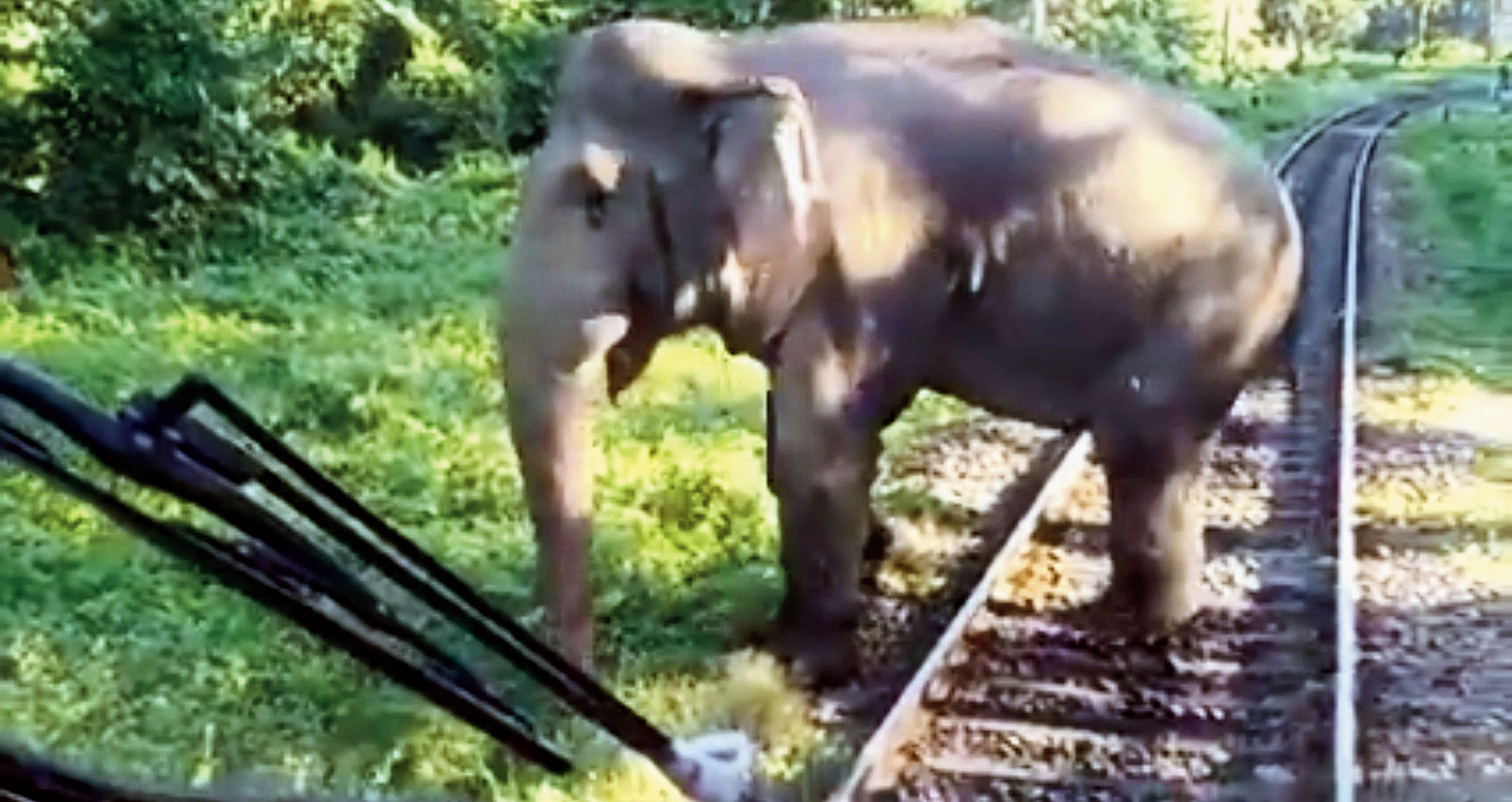Acoustic sensors will be installed in the north Bengal forests to detect elephant calls as part of a trial project to mitigate man-animal conflict.
The machines have hundreds of elephant sounds — from a loud trumpet to exhaling wind through the trunk. They will use artificial intelligence to recognise a similar sound within a fixed radius.
Once the machines recognise a familiar sound, they will send a signal to a remote location — it can be a railway office, a motorman’s phone, the forest office or villagers’ den — to alert them about the presence of elephants in the area.
Fifty-nine elephants have been killed by trains in Bengal since 2006-07, according to state forest department figures. More than 400 people have been killed by the jumbos in the state since 2014-15.
The acoustic sensors can be a game changer in reducing these numbers, a forest official said.
The sensors have been made by the Ear To Wild Foundation, a non-profit organisation dedicated to wildlife research and conservation. The sensors use bio-acoustic technology to detect the presence of animal, in water and on land, by monitoring their sounds.
The man behind the foundation is Michel Andre, a French bio-acoustician who has in the past worked on a similar project to reduce the collision of whales and ships in the Canary Islands. The foundation’s hub of technical expertise is the Laboratory of Applied Bioacoustics (LAB) at the Technical University of Catalonia.
The foundation has signed an agreement with the Dehradun-based Wildlife Institute of India to execute the project.
“Elephants make a host of sounds — in excitement, aggression and distress. There is a specific sound when it rumbles, different from when it exhales air from the trunk. To our ears all sounds are muted except for the trumpet,” Shagun Mehra, director of the foundation and a celebrated chef, said.
“The acoustic sensors can detect sounds within a range of 2km. It has a vast database of existing elephant sounds with which it will match any new sound it detects. The device is equipped to detect the sound when an elephant walks or when it snaps a tree branch,” she said.

A wild elephant that came in front of a passenger train — the tracks pass through the sanctuary, around 10km from Siliguri — on August 6. The motorman managed to stop the train by applying the emergency brakes. The elephant went close to the engine before getting off the tracks and walking away into the jungle after a couple of minutes. Telegraph picture
Last year, a prototype of the sensor was installed at the Mahananda Wildlife Sanctuary in the foothills of the Himalayas. The representatives of the foundation gave a presentation to officials of the environment ministry, IISc Bangalore and state forest officials.
“We had asked for some modifications in the device. We want to eliminate the possibility of the machine confusing an elephant’s sound with that of another animal or a train whistle,” Ravi Kant Sinha, the chief wildlife warden of Bengal, said.
“We had asked for some modifications in the camera attached to the device as well. We are told that the modifications have been done.”
Two such devices will be installed in a forest in north Bengal in the coming months and a demonstration of technology will be held in November, a forest department official said. The places where the sensors will be installed are still to be finalised but Gorumara is one of the front runners.
“We need railway lines through the forests and a herd of captive elephants for the trials. Both are available in Gorumara,” another official said.
The forest department is now dependant on humans to keep track of herds. Two elephants were radio collared in north Bengal earlier this year to monitor the movements of their herds.
But the radio collars will be in use only till the batteries last. In comparison, the sensors are solar-powered and will last much longer, the forest official said.
“The technology has been used in underwater conditions. But elephants are a different species and the technology needs several field trials.... It is too early to comment on the usefulness of acoustic sensors,” Raman Sukumar, professor and chair of the centre for ecological sciences at IISC Bangalore, said.










